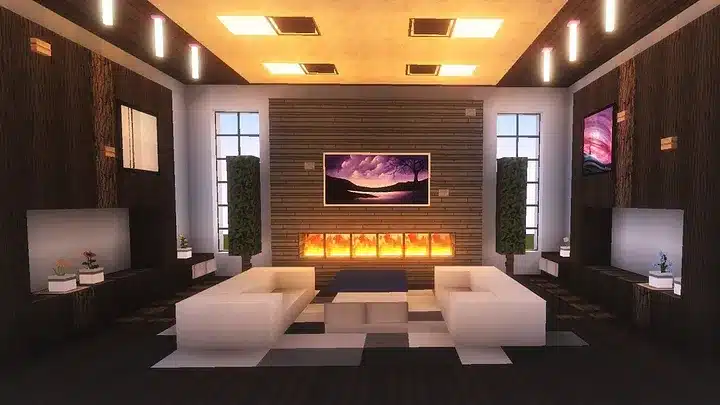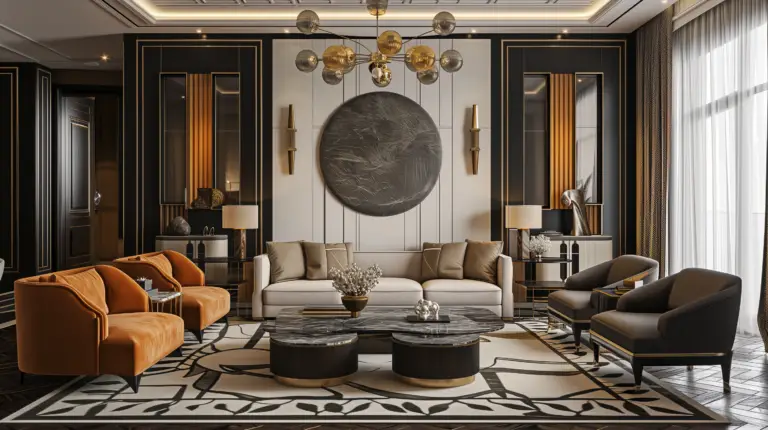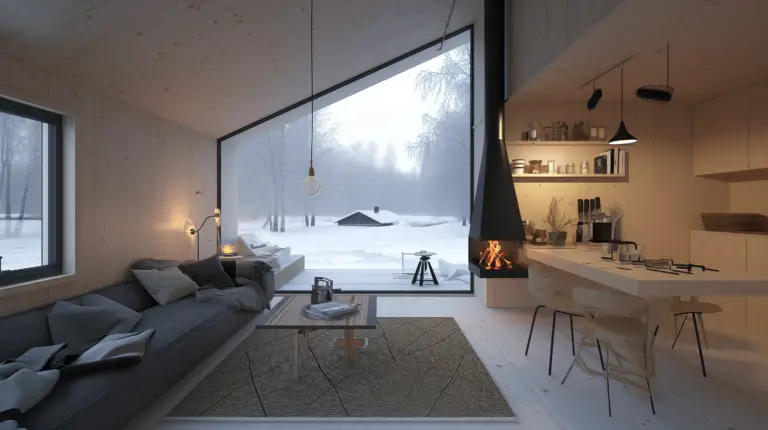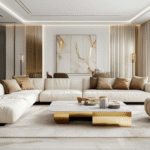Free Shipping On All Orders
5 Steps to Your perfect Zen Japanese Interior Design
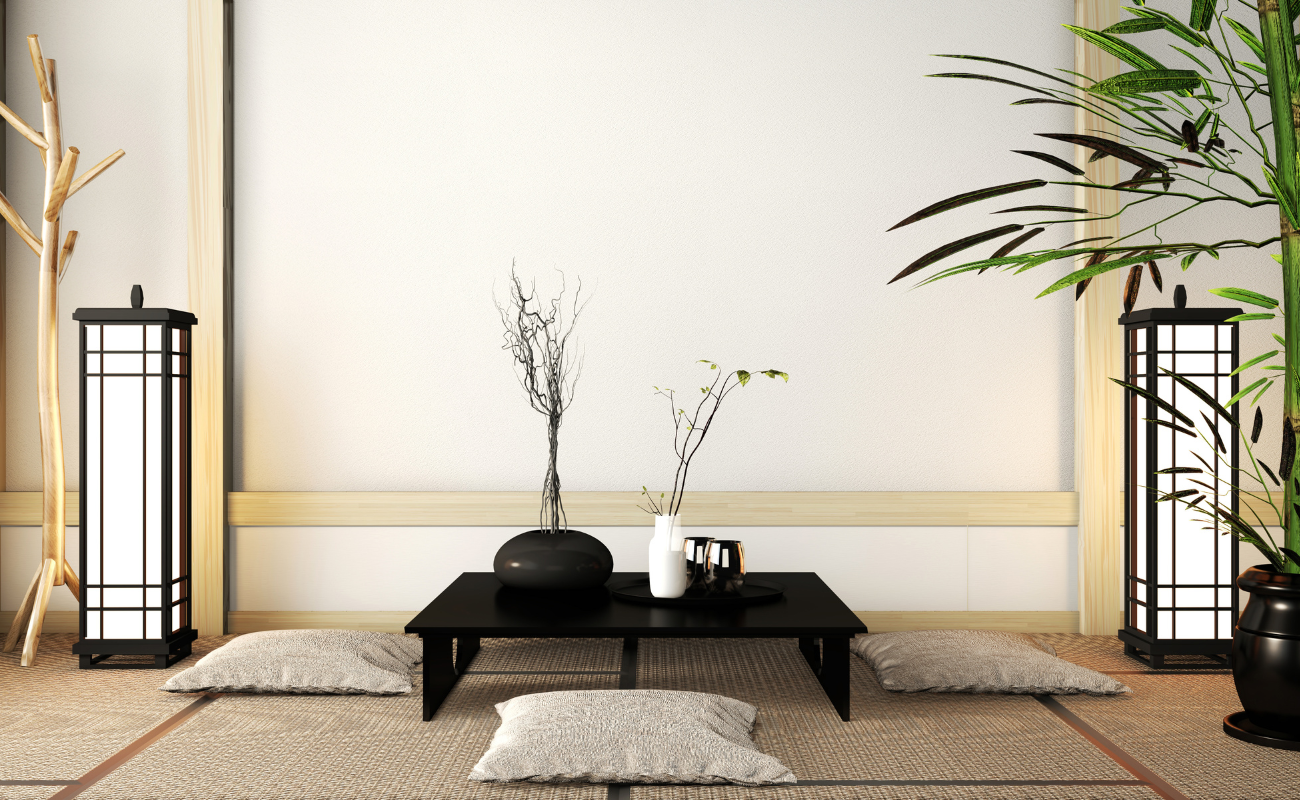
Zen Japanese interior design is a captivating approach to creating a serene, harmonious living space. Drawing from centuries-old Zen Buddhism principles, this aesthetic marries minimalism and functionality, offering a transformative experience that goes beyond mere appearances. A well-designed Zen space not only pleases the eye, but also fosters a sense of tranquility and balance, promoting mindfulness in everyday life.
The essence of Zen Japanese interior design lies in its seamless integration of nature and the celebration of imperfections. Natural materials like wood, bamboo, and stone are commonly used, while Wabi Sabi principles reflect the beauty of aging and worn objects. Additionally, the use of natural light and open spaces emphasizes the connection between the indoors and the outdoors, providing an atmosphere for peaceful contemplation.
Incorporating Zen Japanese interior design into a modern home can be incredibly rewarding. By adhering to the core tenets of minimalism, lightness, and a deep reverence for natural simplicity, you can create an inviting haven that serves as a refuge from the chaos of everyday life. Embrace the tranquility of Zen design and discover how it can elevate the overall ambiance of your living space.
Zen Japanese Interior Design: Origins and Principles
Imagine stepping into a space that instantly calms your mind, envelops you in serenity, and connects you with nature. That’s the power of Zen Japanese interior design, a timeless style born from Japan’s rich cultural history that’s growingly popular in modern homes around the world. Its minimalist approach, aesthetic perfection, and harmony with nature make it an ideal choice for those seeking a tranquil living space. Let’s dive into the origins and principles of this fascinating design style.
Wabi-Sabi
At the heart of Zen Japanese interior design is the concept of Wabi-Sabi, a traditional design philosophy that embraces the beauty of imperfections, natural aging, and simplicity. Wabi-Sabi aims to create a Zen atmosphere aligned with seven design principles, one of which is Kanso, or simplicity. This philosophy encourages the use of natural materials, subtle textures, and muted colors to evoke a sense of authenticity and tranquility.

Minimalism
Minimalism is a key element of Zen japanese interior design, which values open spaces, clean lines, and functional layouts. The traditional Japanese saying “less is more” is apparent in their design approach, with every element carefully chosen to contribute to the overall aesthetic and ambiance. Clutter is discouraged, and hidden storage solutions are employed to maintain a clear, organized environment. Zen design often incorporates rhythmic wooden structural frames, sliding screen doors, and internal courtyards to further instill a sense of minimalism.

Balance and Harmony
Lastly, balance and harmony are central to Zen Japanese interior design. The careful arrangement of furniture, decor, and architectural elements helps create an inviting and peaceful atmosphere. Nature plays a significant role in achieving harmony, with Zen spaces frequently incorporating natural elements such as wood, stone, and plants. Moreover, the use of natural light, earthy tones, and simple patterns reinforce the connection to the natural world, aligning with the Zen belief in harmony between humans and nature.
1. Creating a Tranquil and Uncluttered Space
Transform your home into a sanctuary of peace and serenity by embracing the principles of Zen Japanese interior design. With its focus on nature, minimalism, and balance, it offers an escape from the chaos of daily life and invites a profound sense of well-being and relaxation. Join us as we explore the key elements to create a tranquil and uncluttered living space with nature, decluttering, and open spaces in mind.
Incorporating Nature
One of the fundamental aspects of Zen Japanese interior design is the connection to nature. Bring the tranquility of the natural world indoors by incorporating potted plants, stone arrangements, or a paper pendant light shade inspired by landscape architect Isamu Noguchi. Wood accents, especially teak, work well for furniture pieces such as platform beds. Natural materials not only create an organic atmosphere but also function as aesthetically calming elements.

Decluttering and Organization
Embrace the concept of minimalism to create an uncluttered environment. Remove unnecessary items, making space for mindfulness and clarity. A clean, organized space encourages a clear mind and reduces stress. Utilize smart storage solutions, such as shelves, cabinets, and boxes, to maintain a minimalist yet functional room.
Open Spaces and Flexible Layouts
The Zen approach values emptiness and open spaces, which is essential in achieving a tranquil environment. Make sure your layout is flexible, allowing both fixed and moveable furnishings to create a sense of spaciousness. Opt for modular designs that allow for versatility and adaptability. Focus on the interplay of light and shadow by incorporating large windows and soft, diffused light sources. Remember, the goal is to design a space that encourages relaxation and fosters inner peace.
Discover the tranquility and serenity that Japanese Zen interior design can bring to your living space by selecting the perfect blend of materials and textures. With the right combination of authentic materials, natural fabrics, and imperfections, you can create a harmonious environment that exudes the essence of Zen. Let’s explore how to choose the right materials and textures for your Japanese-inspired space.

2. Selecting Materials and Textures
Authentic Japanese Materials
One crucial aspect of Zen Japanese interior design is the use of authentic, natural materials like wood and bamboo. Incorporating these elements into your space adds a touch of traditional style and harmony. When choosing wood, opt for locally sourced, sustainably harvested varieties, which echo the eco-friendly principles of Zen design. Bamboo, on the other hand, is lightweight, versatile, and equally eco-friendly, making it the perfect addition to your Japanese-inspired décor.

Natural Textiles and Fabrics
Aside from wood and bamboo, natural textiles and fabrics play a significant role in creating a Zen atmosphere. Elements such as linen, cotton, silk, and wool bring tactile comfort and nature’s charm to your space. For example, opt for a cotton tatami mat instead of a synthetic rug, or choose silk and linen textiles for window coverings instead of polyester or synthetic blends. These choices provide a more authentic, serene vibe.

Incorporating Imperfection
The Japanese concept of “Wabi Sabi” celebrates the beauty of imperfection and the natural aging process. In Zen Japanese interior design, this principle can be applied to various elements such as antique furniture, weathered wood, or subtly flawed ceramics. The incorporation of these elements into your space not only adds layers of texture and character but also appreciates the passage of time and the beauty found in imperfection. Embracing this philosophy in your Japanese-inspired interior design will help create a balanced and tranquil environment.
3. Furniture and Decor
Japanese interior design is all about simplicity, balance, and harmony. It’s a style that focuses on a minimalist approach, with great attention to detail. In this article, we’ll delve into the key elements of Zen-inspired furniture and decor to help you bring the soothing, tranquil atmosphere of Japanese aesthetics into your own living space.
Minimalist Furniture
Japanese-style furniture is known for its clean lines and functional design. Pieces are typically low to the ground, promoting a more grounded and serene atmosphere. Materials used include wood, stone, and rattan, chosen for their natural, calming qualities. Many Japanese designers opt for a Japandi aesthetic, which blends Japanese minimalism with Scandinavian interior design principles.

Tatami Mats and Sleeping Solutions
One hallmark of Japanese living spaces is the use of tatami mats. These traditional straw mats are not only visually appealing, but they also serve practical purposes. For example, they can be used for flooring or as a base for a futon, the traditional Japanese sleeping solution. In addition to tatami mats, Japanese-style platform beds known as Raku Tatami and Arata are also popular choices for creating a calming bedroom space.
Accents and Decorative Features
In Zen Japanese interior design, less is often more. Accents and decorative features should be carefully chosen to enhance the overall Zen atmosphere. One key element to consider is lighting, which should be soft, warm, and inviting. A Tokonoma, or recessed display alcove, is a traditional Japanese decorative feature used to showcase items such as a bonsai tree, hanging scroll, or seasonal flower arrangement. Using natural elements like stone sculptures and potted plants can also help to create a serene, peaceful environment in your home.

4. Incorporating Light and Color
When it comes to Zen Japanese interior design, creating a harmonious balance between light and color is essential for a tranquil atmosphere. In this section, we will explore how to make the best use of natural light, choose appropriate artificial lighting, and pick the perfect color palette for your Zen-inspired space.
Maximizing Natural Light
Natural light plays a significant role in creating a serene and uplifting space, as it brings a sense of connection to the outdoors. To maximize natural light, consider implementing large windows or glass doors that allow sunlight to stream in. Incorporating white or light-colored materials in your design, such as walls or furniture, will help reflect light and create a sense of spaciousness.
In addition to windows, incorporating plants into your space can enhance the feeling of connection to nature. A popular choice in Zen Japanese interior design is the use of bonsai or other small potted plants that bring an element of greenery to your interior.

Selecting Artificial Lighting
When natural light is limited, selecting the appropriate artificial lighting is key to maintaining a calming atmosphere. In Zen Japanese interior design, the use of floor lamps and candles creates a warm and relaxing ambiance. Opt for warm, dimmable lights that resemble candlelight, as it creates a soothing environment.
When selecting lamps, consider designs that combine both Japanese and Scandinavian aesthetics for a unique touch. Materials like paper and wood are commonly used in these designs and can create a pleasing diffused light that mimics natural daylight.

Color Palette Choices
A Zen Japanese interior design color palette should be simple and muted, creating a sense of lightness and tranquility. Neutral tones such as white, beige, and gray are often the go-to choices for wall colors, while blue and green accents can be introduced through decorative items or plants.
In addition to muted colors, textures and patterns found in nature can be incorporated into your design to create a greater sense of harmony. Elements such as stone, wood, and woven fabrics can add a subtle touch of visual interest while retaining the soothing atmosphere.
By paying attention to these key elements of light and color, you can create a calming, Zen-inspired space that combines Japanese and Scandinavian styles for a truly unique and peaceful environment.
5. Incorporating Zen Elements in Everyday Life
Imagine transforming your living space into a calming oasis that embodies the essence of Zen Japanese interior design. Your home echoes the balance and tranquility of an ancient temple, providing an escape from the chaos of the modern world. Taking cues from Buddhist principles, incorporating Zen elements allows you to create a harmonious environment that nourishes the mind, body, and soul.
Rock Gardens and Bonsai Trees
Rock gardens, or karesansui, are a staple in Zen Japanese design. These minimalistic landscapes often consist of sand or gravel, raked into calming patterns, and adorned with carefully placed rocks or boulders. Including a rock garden in your outdoor space or even a tabletop version inside your home can invoke a feeling of serenity.
Bonsai trees, another Zen element, are miniature-sized versions of full-sized trees, cultivated through careful pruning and shaping. Growing and maintaining these beautiful bonsai trees can be a meditative practice, nurturing patience and connecting you with nature.

Meditation and Yoga Spaces
Designating a space in your home for meditation and yoga can be an essential step in embracing Zen principles. This area should be clutter-free, with minimalistic décor, emphasizing emptiness and space for the mind to relax and focus.
Incorporate elements like natural materials, soft lighting, or a wabi-sabi approach to your meditation or yoga space. This space celebrates the imperfections in life and can help ground you during meditation or yoga practice. You may also consider including small accents reflecting the Zen philosophy, such as floor cushions, calming artwork, or natural elements like stones or bamboo.

Japanese Influences in Modern Interior Design
Imagine walking into a space that instantly calms your senses, embraces minimalism, and creates a Zen-like harmony. The influence of Japanese Zen principles in modern interior design has led to the creation of unique and captivating interiors blending functionality with simplicity. Let’s delve into the fascinating realm of Japandi style, minimalist Scandinavian design, and contemporary Japanese design.
Japandi Style
Japandi is an interior design style that perfectly fuses Japanese Zen principles with Scandinavian minimalism. This hybrid approach focuses on creating warm, natural, and functional spaces where meticulous craftsmanship meets clean lines and uncluttered layouts. Wooden elements play a crucial role in this synergy, providing an organic connection between the indoors and outdoors, while sustaining the minimalist look and feel.
Minimalist Scandinavian Design
Minimalist Scandinavian design has become increasingly popular in recent years, drawing inspiration from both Japanese Zen and traditional Nordic aesthetics. This design emphasizes the use of light, neutral colors, natural materials, and minimalistic furnishings that prioritize functionality and comfort. The incorporation of Japanese wooden accents and elemental features helps maintain the characteristic simplicity and elegance of the minimalistic Scandinavian style.

Contemporary Japanese Design
Contemporary Japanese design captures the essence of Zen philosophy, infusing modern spaces with a sense of harmony, balance, and tranquility. Rooted in traditional Japanese architecture, this design approach features elements such as minimal furniture layouts, the use of natural materials like wood and stone, and a strong connection with nature through sizable windows and indoor plants. The overall goal is to create visually appealing, uncluttered spaces that foster relaxation and contemplation, reflecting the calm elegance of Japanese Zen principles in modern living spaces.

Frequently Asked Questions
What is Zen Japanese interior design?
Zen Japanese interior design is a minimalistic and simplistic design style that emphasizes clean lines, natural materials, and a connection to nature. It is inspired by Zen
Buddhism and aims to create a peaceful and tranquil space.
What colors are used in Zen Japanese interior design?
Zen Japanese interior design uses neutral colors such as beige, white, and gray to create a calm and relaxing atmosphere. Earthy tones like brown, green, and blue are also commonly used to connect with nature.
What furniture is used in Zen Japanese interior design?
Zen Japanese interior design uses furniture with clean lines and
minimal ornamentation. Furniture is typically made of natural materials such as wood, bamboo, and stone. Low seating, floor cushions, and futons are also commonly used to create a cozy and intimate space.
If you liked this post about brutalist interior design, don’t forget to follow us on Pinterest so you don’t miss any more interior design news!



